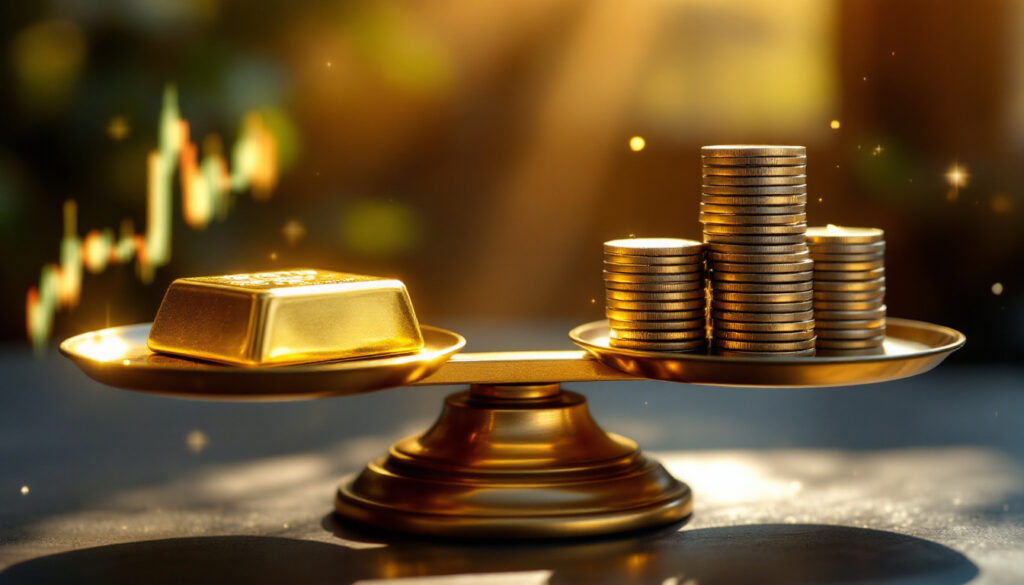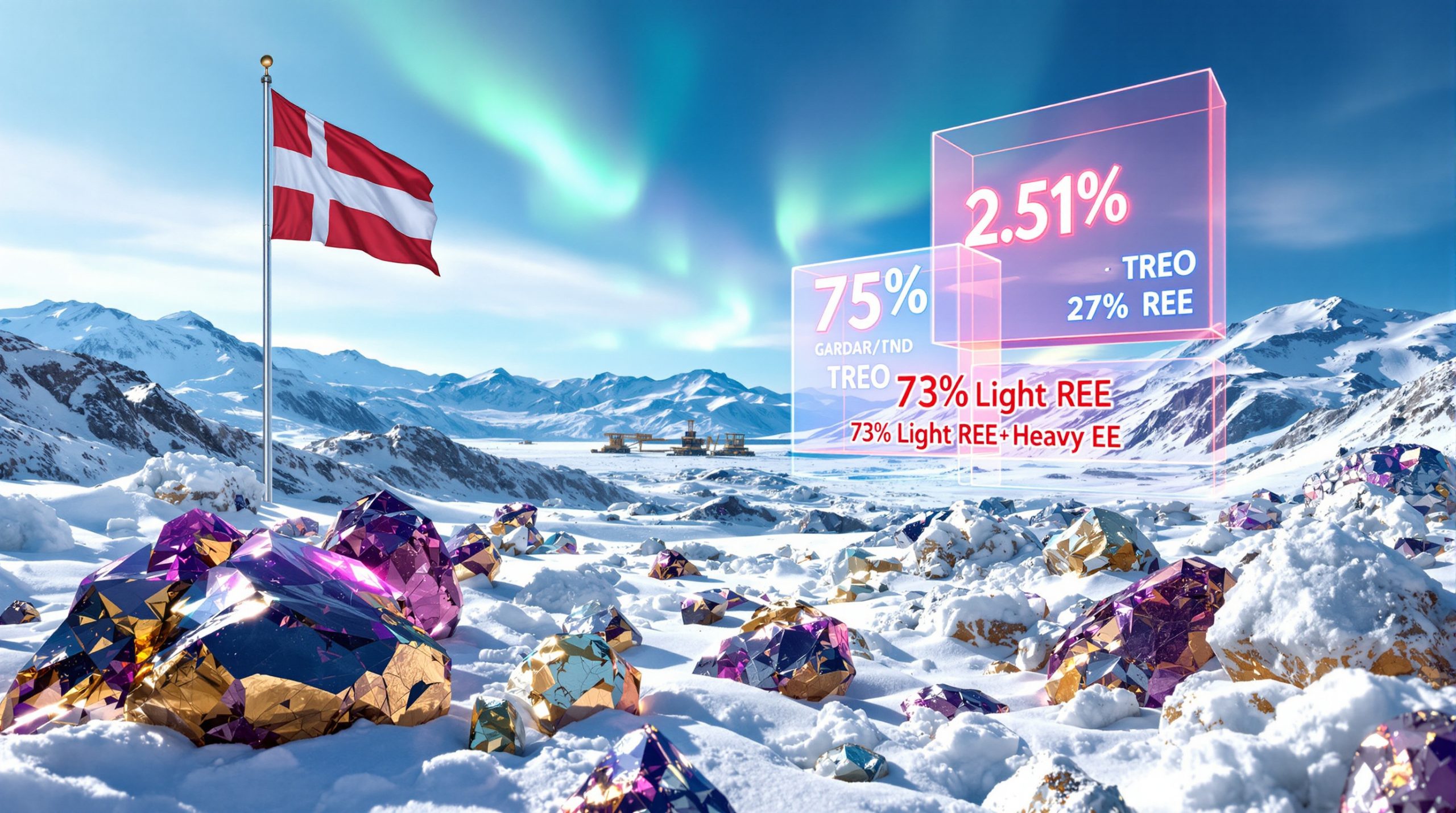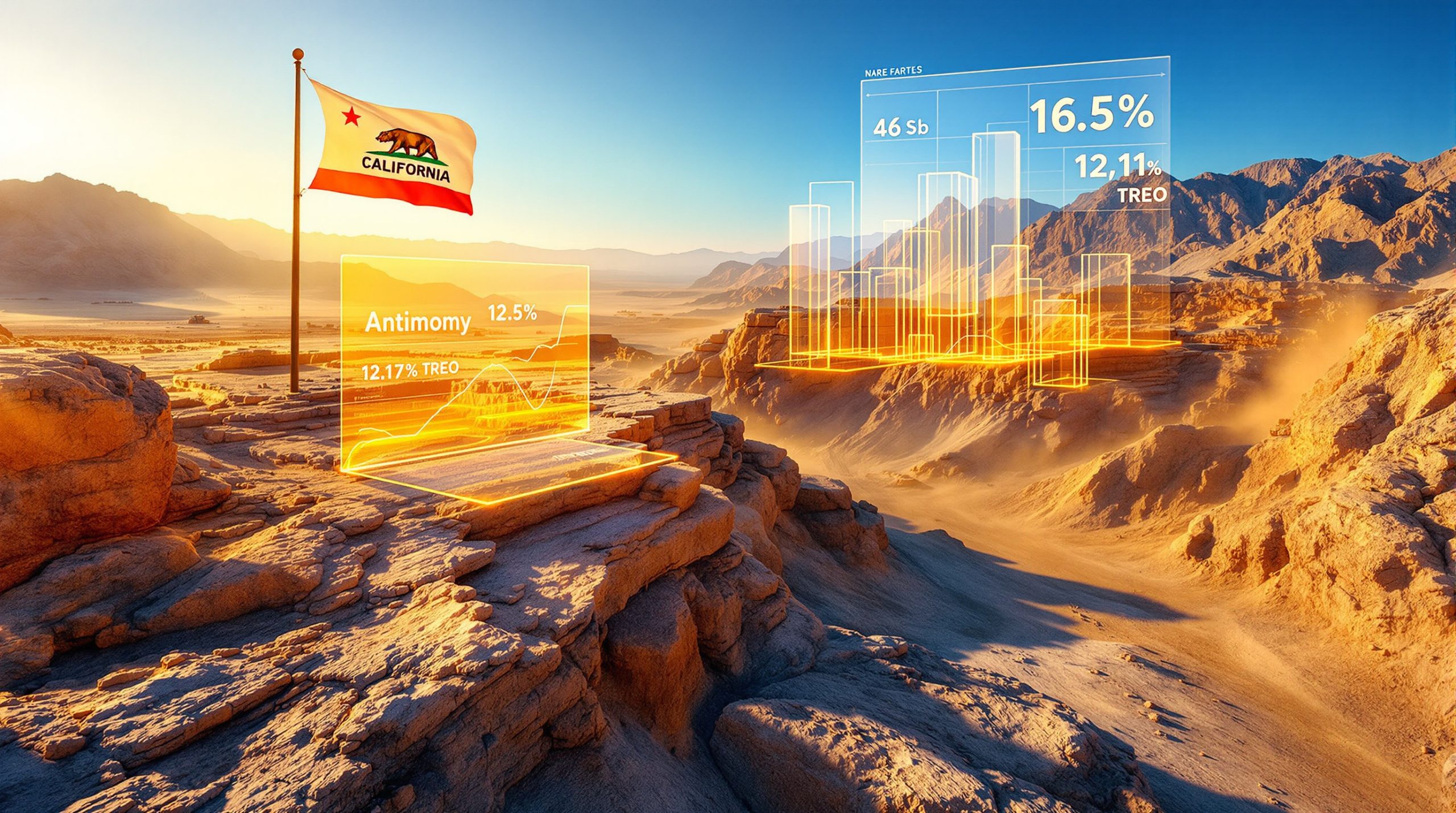What is the Gold to Silver Ratio?
The gold to silver ratio represents the number of silver ounces required to purchase a single ounce of gold. Currently hovering around 100:1, this metric indicates that 100 ounces of silver equals the value of just one ounce of gold. This ratio serves as a fundamental indicator for precious metals investors, offering insights into relative value and potential investment opportunities.
Definition and Historical Context
Throughout history, the gold to silver ratio held significant importance in monetary systems worldwide. Ancient civilizations often established fixed ratios between these metals when they formed the foundation of currency systems. The Roman Empire maintained a 12:1 ratio, while the United States' bimetallic standard in the 19th century set a 15:1 ratio by law.
Since abandoning the gold standard and moving to fiat currencies, these metals have traded freely in global markets, causing the ratio to fluctuate based on supply, demand, and investor sentiment. This transition marked a fundamental shift in how these precious metals market trends relate to each other and function within the global economy.
How the Ratio Has Evolved
The gold to silver ratio has undergone dramatic changes in recent years. Perhaps most striking is that the ratio has not fallen below 60:1 since February 2013—over 12 years of consistently elevated levels. The past decade has established a "new normal" where the ratio typically trades above 80:1, frequently pushing beyond 100:1 during periods of economic uncertainty.
Historical anomalies stand out against this backdrop. In 1980, during the Hunt brothers' attempt to corner the silver market, the ratio narrowed dramatically to approximately 15:1. Similarly, in April 2011, amid quantitative easing and retail investor enthusiasm, it tightened to around 31:1-32:1. However, these were temporary deviations rather than sustainable trends.
Why Are We in a New Era for the Gold to Silver Ratio?
The gold to silver relationship has fundamentally transformed over the past decade, challenging traditional assumptions about how these metals interact. Many analysts continue to cite an outdated "typical" range of 40:1 to 60:1, despite overwhelming evidence that markets have established a new equilibrium.
Modern Trading Patterns
Today's precious metals market bears little resemblance to the pre-2013 landscape. The ratio has consistently traded in the high 70s to above 100 for years, defying predictions of a return to historical means. This persistent pattern suggests structural changes rather than cyclical fluctuations.
Recent market activity reinforces this view. While gold has surged 25% year-to-date, silver has gained only 16%, widening rather than narrowing the ratio. Unusual decoupling events have also emerged, such as a recent trading session where gold fell over 2% while silver simultaneously rose more than 3%—a 5% relative outperformance that challenges the assumption these metals move in lockstep.
Factors Affecting the New Normal
Several factors explain this fundamental shift. First, institutional investors increasingly view gold as a premier crisis hedge and portfolio diversifier, directing massive capital flows toward gold during uncertainty while largely ignoring silver. Gold ETFs strategies have captured billions more in investment than their silver counterparts in recent years.
Second, central bank gold purchases have reached record levels, with sovereign entities acquiring over 1,000 tonnes annually since 2022. By contrast, central banks hold minimal silver reserves and show no interest in changing this position.
Third, silver's dual nature as both precious and industrial metal creates different demand drivers. While gold primarily serves investment and reserve functions, silver increasingly responds to industrial trends in renewable energy, electronics, and healthcare—making its price action less predictable through traditional precious metals frameworks.
Is Silver Undervalued Compared to Gold?
With the gold to silver ratio at historic highs around 100:1, a pressing question emerges: does this represent a significant undervaluation of silver relative to gold? The evidence points toward potential opportunity, though with important caveats.
Current Price Performance
Silver currently trades approximately 35% below its 2011 historic peak of $49.95 (in nominal dollars), while gold has repeatedly set new all-time highs throughout 2025. This divergence presents a stark contrast in performance between the two metals.
While silver has posted a respectable 16% gain year-to-date, gold has surged 25% during the same period, further widening the gap between the metals. This underperformance persists despite silver's growing industrial applications and tightening physical supply.
The price action suggests significant potential energy building in the silver market. Historically, silver tends to lag gold initially during precious metals bull markets, but often accelerates rapidly when investor sentiment finally shifts in its favor, delivering explosive percentage gains that can outpace gold substantially.
Signs of a Potential Silver Breakout
Recent market behavior provides compelling evidence that silver may be preparing for a significant move. Particularly noteworthy was a recent anomalous trading day where gold fell over 2% while silver rose over 3%—a 5% relative outperformance that represents a rare decoupling between the metals.
Similar patterns of silver defying gold's movement have appeared with increasing frequency, suggesting smart money may be positioning ahead of a potential breakout. Technical analysis shows silver establishing higher lows while consolidating below key resistance levels, creating a bullish technical structure.
Additionally, commercial traders on the COMEX have reduced their short positions to multi-year lows, indicating decreased interest in betting against silver at current prices. This positioning often precedes significant upward price movements, as industry insiders typically have the most comprehensive understanding of underlying supply-demand fundamentals.
What Drives Silver Demand Beyond Investment?
While gold remains primarily an investment and monetary asset, silver's industrial applications continue expanding rapidly, creating additional demand drivers beyond its precious metal status.
Industrial Applications
Electric vehicles represent a significant growth area for silver demand. Modern EVs use approximately 25-50% more silver than traditional combustion vehicles, primarily in electrical connections, battery management systems, and sophisticated electronics. As global EV adoption accelerates, silver consumption in this sector is projected to more than double by 2030.
Solar panels constitute one of the fastest-growing sources of silver demand. Each gigawatt of solar capacity requires approximately 20-80 tonnes of silver, depending on the technology used. With global solar installations breaking records annually and projected to reach 500GW per year by 2030, silver's role in the green energy transition appears secure.
Beyond these headline applications, silver plays crucial roles in electronics, 5G technology, medical devices, and defense systems. Silver's unmatched electrical conductivity, thermal properties, and antimicrobial characteristics make it difficult to substitute in many high-performance applications, despite its price volatility.
Water purification systems increasingly incorporate silver for its powerful antimicrobial properties. As global commodities insights reveal, as global clean water concerns intensify due to population growth and climate change, this segment could develop into another significant demand driver within the decade.
Future Technology Developments
Samsung's development of solid-state batteries using silver-based components represents a potential game-changer for industrial silver demand. These batteries promise higher energy density, improved safety, and faster charging compared to conventional lithium-ion batteries. With production expected to begin around late 2027, this technology could significantly increase industrial silver consumption if widely adopted.
Emerging artificial intelligence applications may also drive unexpected silver demand. Advanced computing systems require increasing amounts of high-conductivity materials for efficient power delivery and thermal management. Silver's superior conductivity makes it an ideal, if expensive, solution for these performance-critical applications.
Quantum computing research increasingly utilizes silver in specialized components due to its unique electromagnetic properties. While currently a niche application, the potential scalability of quantum systems could create another source of high-tech silver demand within the decade.
What's the Outlook for Silver Prices?
Forecasting silver prices remains challenging due to the metal's dual nature and heightened volatility compared to gold. However, current market conditions suggest several potential scenarios for silver's performance through 2025 and beyond.
Price Projections
Many analysts predict silver reaching $36 per ounce by the end of the year, representing a 50% increase from current levels. This projection assumes continued strength in precious metals broadly and a modest narrowing of the gold-to-silver ratio from current extremes.
More aggressive forecasts suggest silver could target the $40-50 range if several catalysts align: persistent inflation, geopolitical tensions, central bank policy shifts, and accelerating industrial demand. Such a scenario would likely involve the gold-to-silver ratio compressing toward the 70:1 level.
Seasonal patterns suggest potential summer doldrums in precious metals markets, particularly if economic conditions appear to stabilize. However, autumn typically brings renewed interest in the sector, potentially setting up silver for a strong fourth-quarter performance if broader market conditions remain supportive.
Investment Considerations
Silver's nickname as "the people's gold" reflects its accessibility to retail investors compared to much pricier gold. This demographic factor creates interesting market dynamics, as retail investment enthusiasm can dramatically impact silver prices due to the relatively small size of the silver market (approximately $25 billion annual production versus $220 billion for gold).
Physical silver investors may benefit from increasing ETF investment, contrary to popular belief that paper markets harm physical prices. When institutions direct significant capital into silver ETFs, these funds must purchase physical metal for their vaults, creating additional demand that supports the broader silver market.
Behavioral patterns suggest silver typically lags gold initially during precious metals bull markets, then accelerates rapidly when market sentiment shifts. This creates potential opportunities for investing vs speculating ahead of this rotation, though timing such moves remains notoriously difficult.
FAQs About the Gold to Silver Ratio
Should investors use the gold to silver ratio to time purchases?
While the gold to silver ratio provides valuable context, investors should exercise caution using it as a primary timing mechanism. Historical anomalies like the 15:1 ratio in 1980 and 31:1 in 2011 proved temporary rather than sustainable levels, quickly reverting to higher ranges.
The ratio should instead be considered alongside other metrics such as technical analysis, sentiment indicators, and fundamental supply-demand factors. Extreme readings above 100:1 may indicate potential relative value in silver, but don't guarantee immediate mean reversion.
Is the current 100:1 ratio abnormal?
Not within the context of the past decade, where the ratio has consistently remained above 60:1. While historically high compared to centuries-old averages or the fixed ratios of monetary systems, today's market has established a new normal range significantly higher than traditional benchmarks.
This shift reflects fundamental changes in how these metals function in the modern economy—gold as a premier reserve asset attracting institutional capital, and silver increasingly divided between industrial and investment demand. For a comprehensive historical perspective, the Investopedia guide on the gold-silver ratio provides valuable context.
What factors could narrow the gold to silver ratio?
Several scenarios could potentially compress the ratio toward historical norms. Increased industrial demand for silver, particularly from emerging technologies like solid-state batteries or quantum computing, could create supply constraints that drive prices higher independent of gold.
A rotation of investment flows from gold to silver could occur if gold becomes perceived as overvalued or if inflation persists while economic growth improves—conditions that historically favor silver's industrial component.
Technological innovations requiring significantly more silver could create unexpected demand surges. For example, if Samsung's silver-based solid-state batteries prove commercially successful, they could potentially consume substantial portions of annual silver production.
How does silver's dual nature as both precious and industrial metal affect its price?
Silver's hybrid identity creates both opportunities and challenges for investors. During economic expansions with moderate inflation, silver often outperforms gold due to its industrial demand component. Conversely, in severe economic contractions, silver can initially underperform gold as industrial demand weakens before its precious metal characteristics attract investment.
This dual nature means silver typically experiences more volatility than gold, with price movements amplified in both directions. However, it also creates potential resilience through diversified demand sources—when investment demand weakens, industrial consumption may provide price support, and vice versa. Understanding gold's role as a hedge can provide additional context for how these metals interact during various economic conditions, as detailed by the Gold Silver Ratio tracker at GoldPrice.org.
Interested in Capitalising on the Next Major Mineral Discovery?
Gain immediate notifications on significant ASX mineral discoveries with Discovery Alert's proprietary Discovery IQ model, which transforms complex data into actionable investment insights. Visit the Discovery Alert discoveries page to understand why historic discoveries can generate substantial returns, and begin your 30-day free trial today to position yourself ahead of the market.




